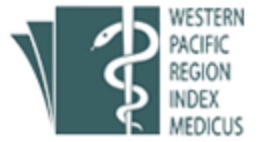Aspergillus ochraceus: A Rare Cause of Paranasal Fungal Ball
DOI:
https://doi.org/10.31436/imjm.v24i03.2662Keywords:
Aspergillus, Aspergillus ochraceus, fungal ball, non-invasive sinusitisAbstract
Infection of paranasal sinuses is not uncommon. Fungal ball of the paranasal sinuses is a non-invasive form of paranasal sinus infection that has been documented to be more frequently caused by Aspergillus fumigatus than by other Aspergillus species and typically affects immunocompetent individuals more than those who are immunocompromised. Here, we report the first case of Aspergillus ochraceus (A. ochraceus) in an immunocompromised patient with post-trauma maxillary implant who presented with transient ischemic attack and incidental findings of fungal ball within the right maxillary sinus from the Computed Tomography (CT) scan. A. ochraceus is a species under the Aspergillus section Circumdati, a widely distributed fungus which is pathogenic to humans that can lead to various clinical implications. A. ochraceus was detected from paranasal tissue sent for culture. The laboratory culture findings were further supported by histopathological evidence of fungal hyphae and matrix-assisted laser desorption ionization time-of-flight mass spectrometry (MALDI-TOF) identification.
Downloads
Downloads
Published
How to Cite
Issue
Section
License
All material submitted for publication is assumed to be submitted exclusively to the IIUM Medical Journal Malaysia (IMJM) unless the contrary is stated. Manuscript decisions are based on a double-blinded peer review process. The Editor retains the right to determine the style and if necessary, edit and shorten any material accepted for publication.
IMJM retain copyright to all the articles published in the journal. All final ‘proof’ submissions must be accompanied by a completed Copyright Assignment Form, duly signed by all authors. The author(s) or copyright owner(s) irrevocably grant(s) to any third party, in advance and in perpetuity, the right to use, reproduce or disseminate the research article in its entirety or in part, in any format or medium, provided that no substantive errors are introduced in the process, proper attribution of authorship and correct citation details are given, and that the bibliographic details are not changed. If the article is reproduced or disseminated in part, this must be clearly and unequivocally indicated.










